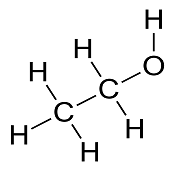Prefactibilidad tecno-económica para la producción de etanol a partir de la electroreducción de CO2
Contenido principal del artículo
En la actualidad se desconoce la prefactibilidad tecno-económica de la reducción electroquímica de CO2 a etanol, lo que genera un reto por mitigar el impacto que generan los gases de efecto invernadero en el ambiente. En este estudio, se realizó el diseño básico para obtener alcohol carburante a partir de dióxido de carbono con la herramienta de simulación Aspen Plus V11, tomando como base parámetros experimentales suministrados por Yuan (1) y escalado a una planta que procesa 226,12 Ton/día de CO2. Se determinó la cinética para la fase líquida de s-1 y las condiciones de operación del proceso para obtener conversión del 98,74%, selectividad de 8,85%, flujo de etanol al 99% de 4.390,18 kg/h y un flujo de hidrógeno de 1.828,96 kg/h. De la estimación de costos se determinó la viabilidad económica del proceso, con una TIR igual a 85,18% y una recuperación de la inversión a partir de los 2,20 años de iniciado el proyecto. Finalmente, se determinó que la producción de alcohol carburante a partir de dióxido de carbono por medio de un proceso electroquímico es viable técnica y económicamente
- Reducción electroquímica
- Alcohol carburante
- Dióxido de carbono
- Viabilidad técnico-económica
- Aspen Plus
Guerra, Y., Zumalacárregui, L., & Pérez, O. C. (2016). Simulación de la destilación extractiva para la obtención de etanol anhidro empleando glicoles. Ciencia, Docencia y Tecnología, 362-383.
Instituto de hidrología, meteorología y estudios ambientales (IDEAM). (2018). Sistema de información ambiental de Colombia (SIAC). Obtenido de Gases de efecto invernadero (GEI): http://www.siac.gov.co/web/siac/climaticogei
Kauffman, D., Thakkar, J., Siva, R., Matranga, C., Ohodnicki, P., Zeng, C., & Jin, R. (2015). Efficient electrochemical CO2 conversion powered by renewabel energy. ACS Appl. Mater. Interfaces 7, 15626 - 15632.
Loodts, V., Rongy, L., & Wit, A. (2014). Impact of pressure, salt concentration, and temperature on the convective dissolution of carbon dioxide in aqueous solutions. AIP. CHAOS, An Interdisciplinary Journal of Nonlinear Science.
López, D. (2018). Criterios de selección para un agente material de separación en un proceso de deshidratación de etanol por destilación extractiva. Formación Investigativa.
Mah, S.-K., Ching, C., Wu, T., & Chai, S.-P. (2014). The study of reverse osmosis on glycerin solution filtration: Dead-end and crossflow filtrations, transport mechanism, rejection and permeability investigations. Desalination, 66-81.
Mbah, J., Pootoon, R., & Kazuva, C. (2018). AspenPlus TM model of stack cell reactor for the conversion of CO2 and H2S to CH2O2. International Journal of Applied Engineering Research, 13(11), 9042 - 9052.
Ministerio de ambiente y desarrollo sostenible. (2018). Colombia le presenta al mundo su reporte de actualización en cambio climático ante la convención de naciones unidas. Colombia.
Morrinson, A., Van, V., Ramdin, M., Van den Broeke, L., Vlugt, T., & Jong, W. (2019). Modeling the electrochemical conversion of carbon dioxide to formic acid or formate at elevated pressures. Journal of The Electrochemical Society, 77-86.
Uyazán, A., Gil, I., Aguilar, J., Rodríguez, G., & Caicedo, L. (2006). Producción de alcohol carburante por destilación extractiva: Simulación del proceso con glicerol. Ingeniería e Investigación , 45-50.
Vaidyanathan, G. (4 de Noviembre de 2014). The worst climate pollution is carbon dioxide. Obtenido de Scientific American 175, E&E News: https://www.scientificamerican.com/article/the-worst-climate-pollution-is-carbon-dioxide/
Wu, L., Guo, T., & Li, T. (2021). Machine learning accelerated prediction of overpotencial of oxygen evolution reaction of single atom catalysts. IScience, 24.
Xu, J., Zhao, H., Li, W., Li, P., Chen, C., Yue, Z., . . . Yang, H. (2022). Facile strategy for preparing a novel reinforced blend membrane with high cycling stability for vanadium redox flow batteries. Chemical Engineering Journal, 433.
Yaashikaa, P. R., Kumar, P. S., Varjani, S. J., & Saravanan, A. (2019). A review on photochemical, biochemical and electrochemical transformation of CO2 into value-added products (review). Journal of CO2 Utilization, 33, 131-147. doi:https://doi.org/10.1016/j.jcou.2019.05.017
Yuan, J., Yang, M.-P., Zhi, W.-Y., Wang, H., Wang, H., & Lu, J.-X. (2019). Efficient electrochemical reduction of CO2 to ethanol on Cu nanoparticles decorated on N-doped graphene oxide catalysts. Journal of CO2 Utilization, 33, 452 - 460.
Zhang, F., Chen, C., Tang, Y., & Cheng, Z. (2020). CO2 reduction in a microchannel electrochemical reactor with gas-liquid segmented flow. Chemical Engineering Journal.
Descargas

Esta obra está bajo una licencia internacional Creative Commons Atribución-NoComercial-CompartirIgual 4.0.
Los autores que publican en esta revista están de acuerdo con los siguientes términos:
Los autores ceden los derechos patrimoniales a la revista y a la Universidad del Valle sobre los manuscritos aceptados, pero podrán hacer los reusos que consideren pertinentes por motivos profesionales, educativos, académicos o científicos, de acuerdo con los términos de la licencia que otorga la revista a todos sus artículos.
Los artículos serán publicados bajo la licencia Creative Commons 4.0 BY-NC-SA (de atribución, no comercial, sin obras derivadas).


 https://orcid.org/0009-0001-5007-9330
https://orcid.org/0009-0001-5007-9330 https://orcid.org/0009-0002-5240-2549
https://orcid.org/0009-0002-5240-2549 https://orcid.org/0000-0002-1805-4328
https://orcid.org/0000-0002-1805-4328 https://orcid.org/0000-0002-5046-9371
https://orcid.org/0000-0002-5046-9371


